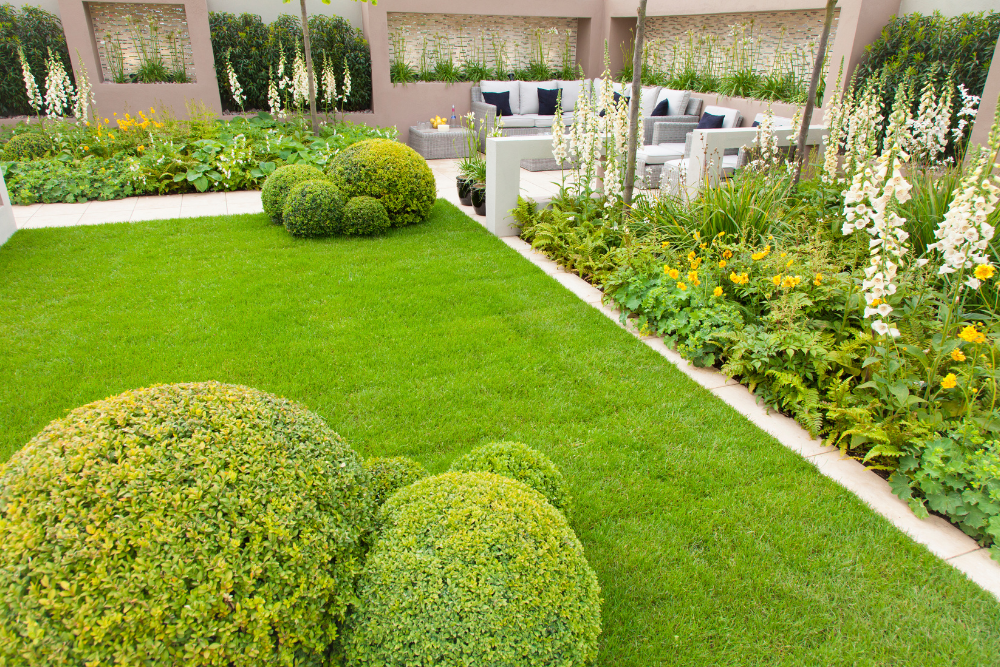The Midwest is experiencing a renaissance in gardening and landscaping, with homeowners embracing sustainable practices, aesthetic innovation, and functional outdoor living spaces. As we navigate through 2025, these trends are reshaping how Midwesterners interact with their outdoor environments. From eco-friendly designs to the integration of technology, the region's landscapes are evolving to reflect a harmonious blend of nature and modern living.
Sustainable Landscaping Practices
Native Plants and Natural Landscaping
Incorporating native plants into landscapes not only enhances biodiversity but also reduces maintenance. These plants are well-adapted to the local climate, requiring less water and fertilizer. By choosing native species, homeowners can create resilient and eco-friendly gardens that support local wildlife and reduce environmental impact.
Xeriscaping and Water Conservation
With increasing concerns over water usage, xeriscaping has gained popularity. This landscaping method focuses on using drought-tolerant plants and efficient irrigation systems to minimize water consumption. It's an ideal solution for areas prone to dry conditions, ensuring lush landscapes without straining water resources.
Pollinator-Friendly Gardens
Creating gardens that attract pollinators like bees and butterflies is a growing trend. By planting a variety of nectar-rich flowers and providing habitats such as bird baths and insect hotels, homeowners can contribute to the health of local ecosystems while enjoying vibrant, buzzing gardens.
Outdoor Living Spaces
Outdoor Kitchens and Entertainment Areas
The concept of extending indoor living to the outdoors has become a staple in Midwest homes. Outdoor kitchens equipped with grills, sinks, and refrigerators, along with comfortable seating areas and fire pits, allow homeowners to entertain guests and enjoy meals al fresco, making the most of the region's seasonal climate.
Zen and Meditation Gardens
Amidst the hustle and bustle, many are seeking tranquility in their own backyards. Zen gardens, featuring elements like gravel, rocks, and minimalist plantings, provide a serene space for reflection and relaxation. These gardens promote mindfulness and offer a peaceful retreat from daily stresses.
Vertical Gardening
For those with limited space, vertical gardening offers a solution. Utilizing walls and fences to grow plants, herbs, and vegetables, this method maximizes space and adds greenery to urban and suburban environments. It's a practical approach that combines aesthetics with functionality.
Aesthetic Innovations
Artistic Hardscaping
Hardscaping elements like patios, walkways, and retaining walls are being transformed into works of art. Incorporating intricate patterns, custom sculptures, and mosaics adds personality and visual interest to outdoor spaces, elevating the overall landscape design.
Seasonal Interest Gardens
Designing gardens that offer visual appeal throughout the year is a key trend. By selecting plants with varying bloom times, textures, and colors, homeowners can ensure their gardens remain vibrant and engaging in every season, from spring blossoms to winter interest.
Minimalist and Clean Designs
Simplicity is in vogue. Landscapes featuring clean lines, uncluttered spaces, and a limited plant palette create a sense of spaciousness and serenity. This minimalist approach reduces maintenance and offers a modern aesthetic that appeals to many homeowners.
Functional and Edible Landscapes
Foodscaping
Blending beauty with utility, foodscaping integrates edible plants into ornamental landscapes. Homeowners are incorporating fruit trees, berry bushes, and herb gardens into their yards, providing fresh produce while enhancing the landscape's aesthetic appeal.
No-Mow and Clover Lawns
Traditional lawns are being replaced with low-maintenance alternatives. No-mow lawns, featuring native grasses and wildflowers, and clover lawns, which require less water and fertilizer, are gaining popularity for their environmental benefits and reduced upkeep.
Technological Integration
Smart Irrigation Systems
Advancements in technology have led to the development of smart irrigation systems that adjust watering schedules based on weather conditions and soil moisture levels. These systems promote water conservation and ensure plants receive optimal hydration.
Automated Landscape Maintenance
Robotic lawn mowers and automated lighting systems are becoming commonplace in Midwest landscapes. These innovations reduce manual labor and enhance the efficiency of maintaining outdoor spaces, allowing homeowners to enjoy their gardens with minimal effort.
Midwest-Specific Considerations
The Midwest's distinct climate and seasonal variations influence landscaping choices. Homeowners are selecting plants and materials that can withstand harsh winters and fluctuating temperatures. Incorporating windbreaks, using snow-tolerant plants, and designing for seasonal interest are essential strategies for creating resilient and year-round landscapes.
Midwest homeowners are embracing a harmonious blend of sustainability, functionality, and aesthetics in their gardening and landscaping endeavors. By integrating native plants, sustainable practices, and innovative designs, they are transforming their outdoor spaces into vibrant, eco-friendly retreats. Whether it's creating a pollinator-friendly garden, installing an outdoor kitchen, or adopting smart technology, the trends of 2025 reflect a commitment to enhancing both the environment and quality of life.




